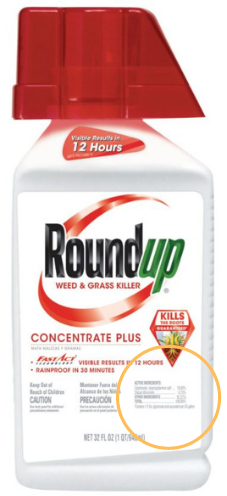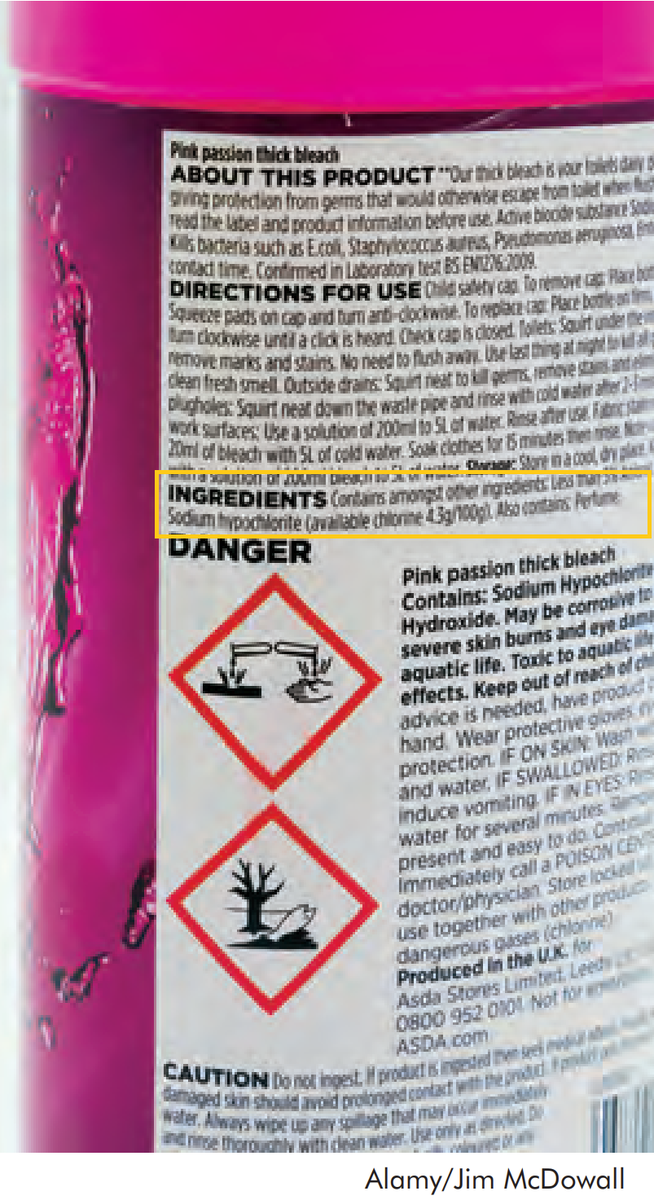Gateway on Pesticide Hazards and Safe Pest Management
How To Find Ingredients in Pesticide Products
Beyond Pesticides offers resources below to evaluate the health and ecological effects of specific chemical exposure from ACTIVE INGREDIENTS in pesticide products, as well as regulatory information and supporting scientific documents. Because various pesticide products can contain more than one active ingredient, it is important to READ the LABEL to determine chemical components.
With 192 different active ingredients and counting, it is essential to establish the connection between the use of these chemicals and their respective hazards.
View the step-by-step guide on how to search for the active ingredient(s) in pesticide products below:
- Go to U.S. EPA's Pesticide Product and Label System and enter the product name. The generic product name may vary.
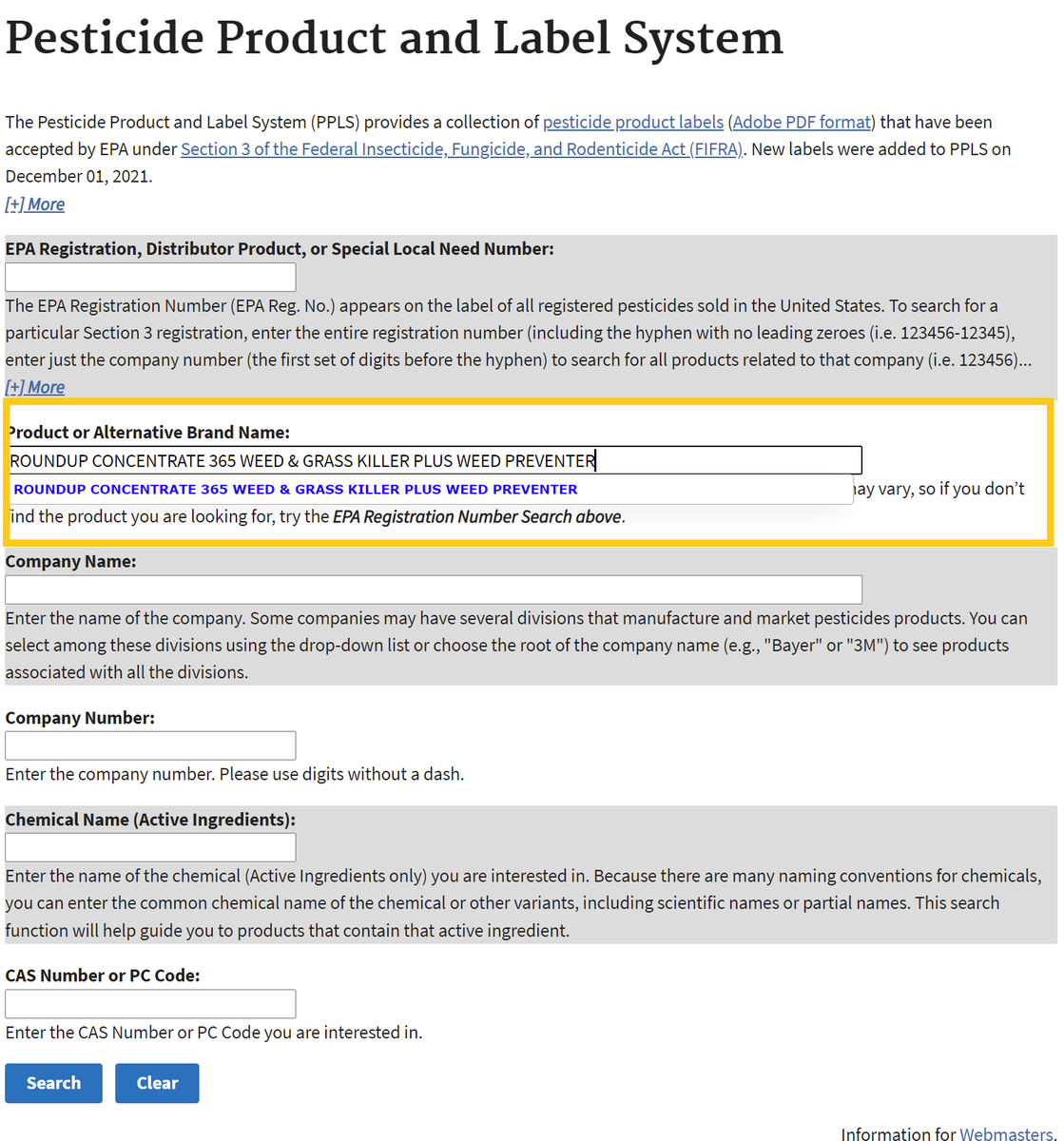
- After searching, click on the chemical ingredients tab or the link for the most recent label to find Active Ingredients.
Chemical List Label List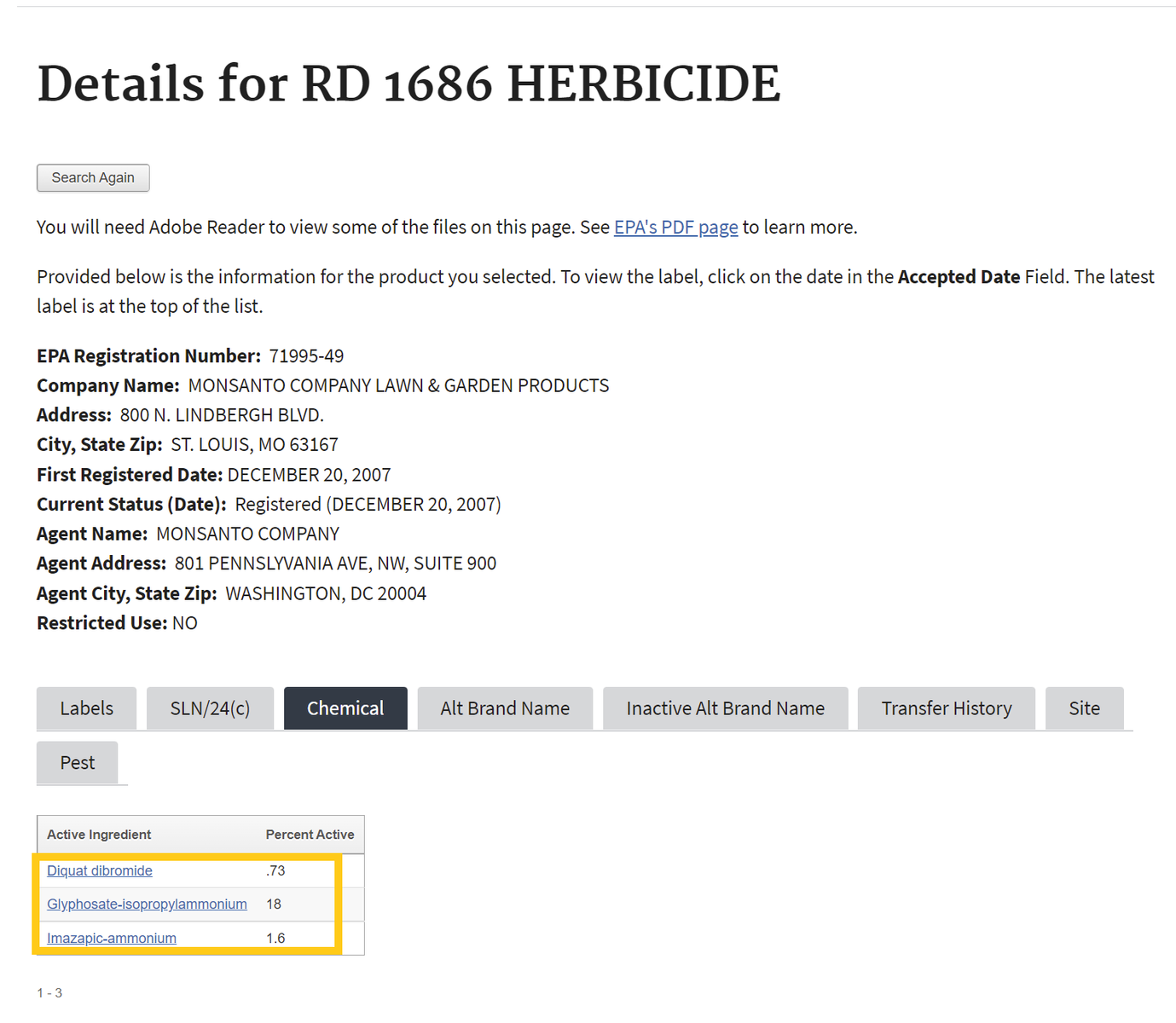
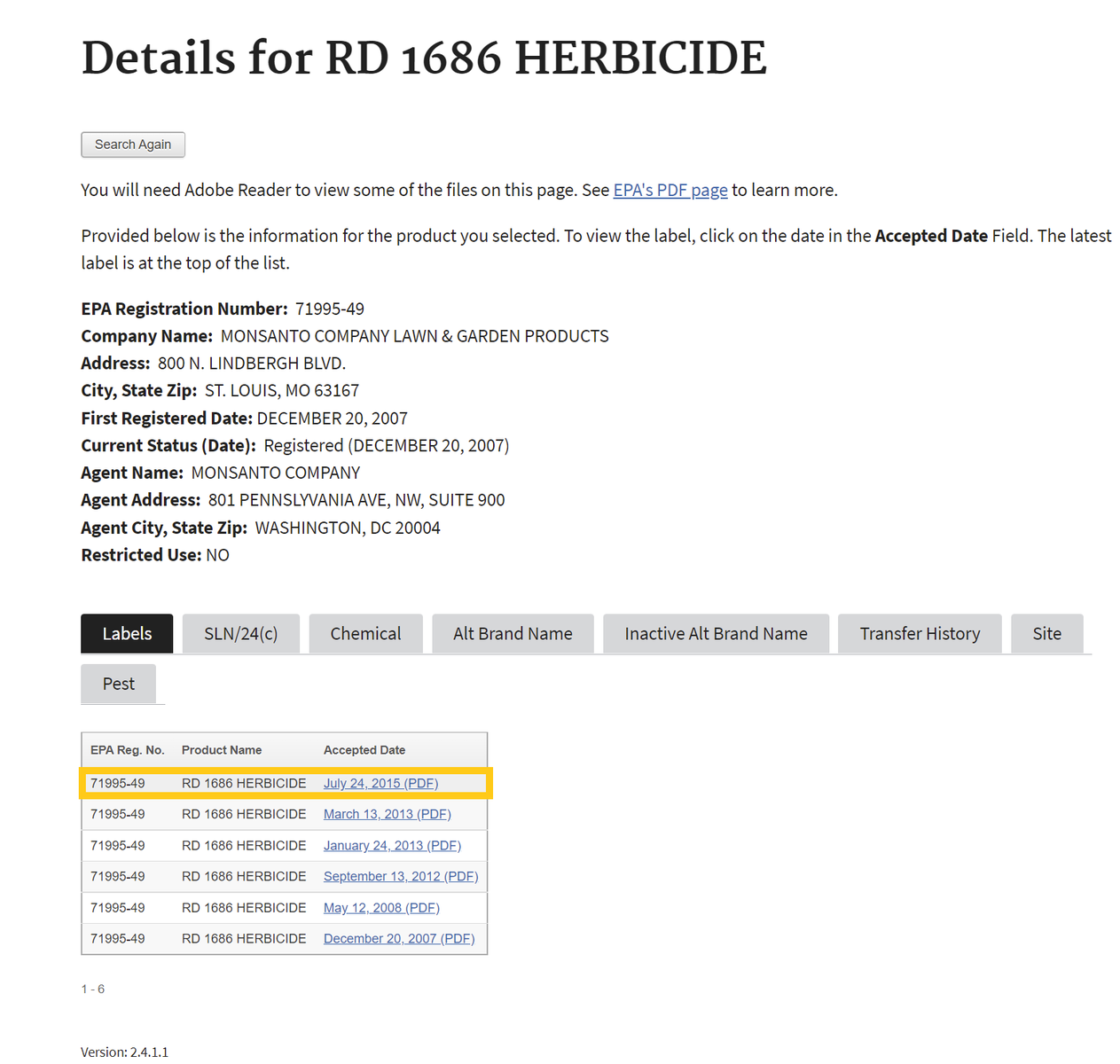
If one selects the chemical ingredients tab, skip to Step 4 . If not, proceed to step number 3 - To find the active ingredient(s) on the label, search for the page in the document containing the date of registration. Usually, the active ingredients section occurs within the first few pages of the label document.
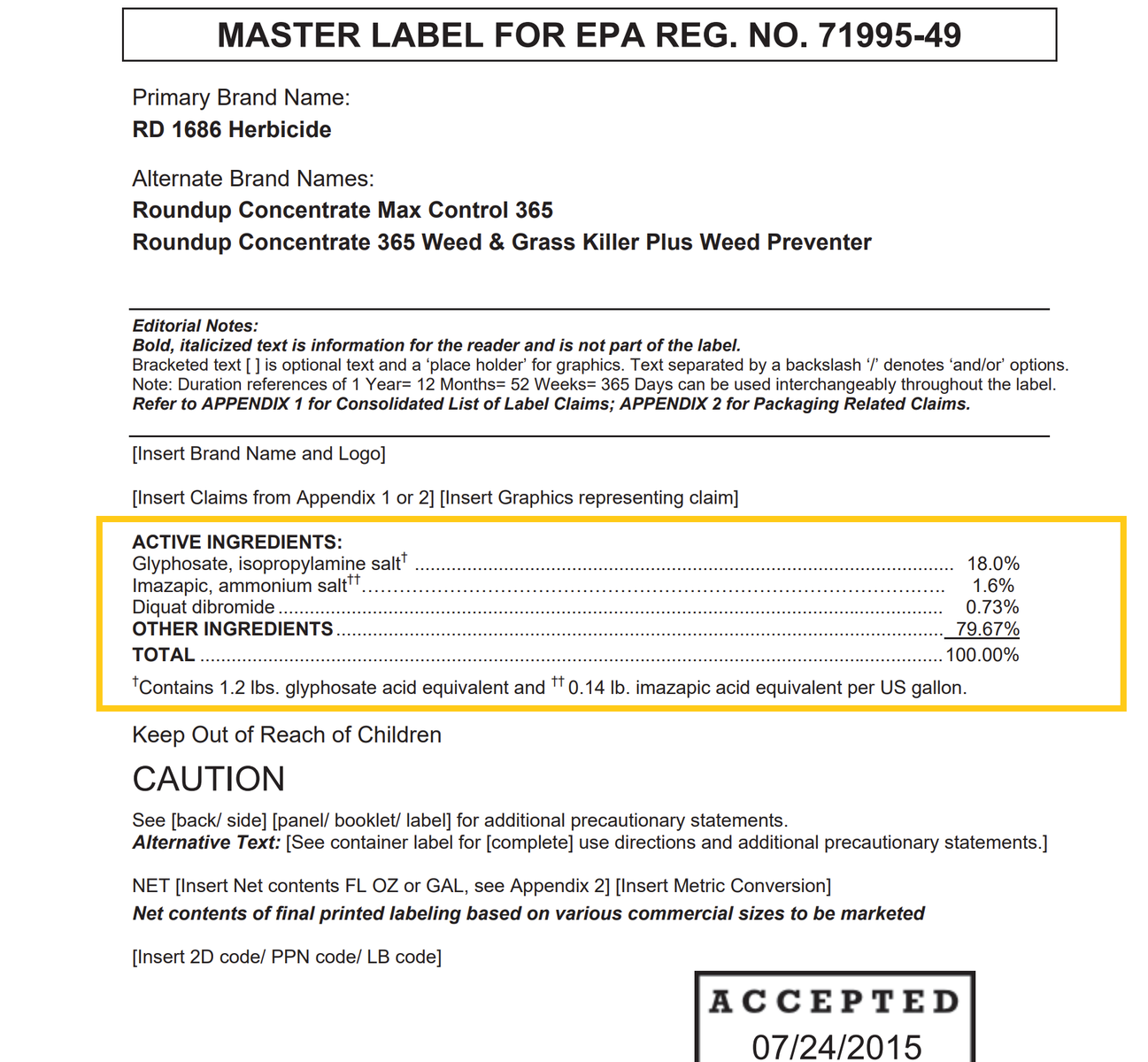
- Return to the Beyond Pesticides Gateway and search for the active ingredient name in the yellow box to the right or from the list below.
Propargite
General Information
- Product Names:
- Chemical Class: Organosulphite
- Uses: Controls mites
- Alternatives: Organic agriculture
- Beyond Pesticides rating: Toxic
Health and Environmental Effects
- Cancer: Yes (21)
- Endocrine Disruption: Not documented
- Reproductive Effects: Yes (21)
- Neurotoxicity: Not documented
- Kidney/Liver Damage: Not documented
- Sensitizer/ Irritant: Yes (8)
- Birth/Developmental: Not documented
- Detected in Groundwater: Not documented
- Potential Leacher: Not documented
- Toxic to Birds: Not documented
- Toxic to Fish/Aquatic Organisms: Yes (8)
- Toxic to Bees: Not documented
Additional Information
- Regulatory Status:
- EPA Reregistration Eligibility Decision (revised 09/2001)
- Supporting information:
- Studies:
- Top 15 Farmworker Poison
- Agricultural exposures and gastric cancer risk in Hispanic farm workers in California. Mills, P.K., and Yang, R.C. 2007. Environ Res 104(2):282-289.
- A pesticide and iPSC dopaminergic neuron screen identifies and classifies Parkinson-relevant pesticides. Paul, K.C., Krolewski, R.C., Lucumi Moreno, E., Blank, J., Holton, K.M., Ahfeldt, T., Furlong, M., Yu, Y., Cockburn, M., Thompson, L.K. and Kreymerman, A., 2023. Nature Communications, 14(1), p.2803.
- Proximity to residential and workplace pesticides application and the risk of progression of Parkinson's diseases in Central California. Li, S. et al. (2022) Proximity to residential and workplace pesticides application and the risk of progression of parkinson’s diseases in Central California, Science of The Total Environment. Available at: https://www.sciencedirect.com/science/article/pii/S0048969722079542.
- Unveiling bee pollen's contamination with pesticides and mycotoxins: Current analytical procedures, results and regulation. Carrera, M. et al. (2024) Unveiling bee pollen’s contamination with pesticides and mycotoxins: Current analytical procedures, results and regulation, Trends in Analytical Chemistry. Available at: https://www.sciencedirect.com/science/article/abs/pii/S0165993624004187.








.png)
